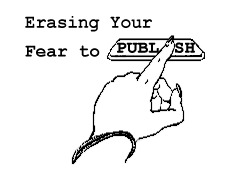Bring Stories to Life With the Right Point of View

When I started to plan the writing of my novel, the biggest craft question I had was, which narrative point of view (POV) should I use? I felt like I couldn’t start writing until I knew how to tell the story.
I hadn’t put too much thought into selecting a POV when writing short stories. I tended to follow the story idea, and the narration flowed naturally. Most of my stories use the third person limited POV to closely follow the main character’s thoughts and actions.
When Thelma got the all-clear to go back inside her apartment, she looked up and down the hall to make sure no one watched her return to the site of the incident. She slinked inside and gave the middle finger to the now silent smoke alarm.
I’ve also put some distance between the main character and the narration by designating an outside observer as a first-person narrator.
I saw Nancy, the president of the HOA, nail a hot pink notice, like the ones I’d received a time or two, on Marsha’s front door. No, it wasn’t a condolence but a nasty letter telling Marsha to cut the lawn or else.
I thought about the role I wanted POV to play in my novel. I knew I wanted to create immediacy while closely connecting to the main character’s thoughts, emotions, and actions. This ruled out a know-it-all omniscient third-person narrator and second-person point of view that would pull the reader in as a character, “you.”
So, I decided to write my novel in the first person present tense. This POV puts the reader right alongside my heroine, Bessie, as she makes discoveries and experiences the plot.
I clench my teeth and suck in my breath as I pluck another stinger from the back of my arm. The red blouse ripped in several places where the bush sliced the fabric. Horse riding is a joke I don’t want to be a part of.
The first-person present-tense narration has several limitations or trade-offs. Readers won’t see what other characters are doing when Bessie is not present. And Bessie can’t talk about what happens in the future, although that doesn’t feel unusual to me because that’s realistic to how time works.
If it was important to talk about the future in my story, I could use past tense in first person or third person POV. If it was important to show what other characters are doing, I could use omniscient narration, have another character narrate, or trade-off POV characters.
These types of things need to be considered when choosing a POV for your story. I’m happy with my decision and can always revise the story if I run into a stumbling block. On my POV journey, I’ve found it helpful to try a few different narration techniques to see what works best and, most importantly, tell the story in a way that is not confusing for the reader.
Learn more tips about selecting the right POV for your story in this Ask an Editor session I co-hosted with Copy Editor Lila LaBine.
